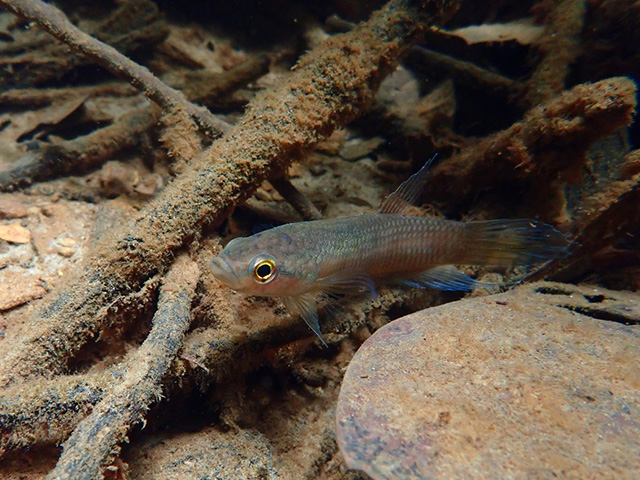|
Betta akarensis Regan, 1910 Akar betta |

|
|
photo by
Petersen, P. |
| Family: | Osphronemidae (Gouramies), subfamily: Macropodusinae | |||
| Max. size: | 14 cm TL (male/unsexed) | |||
| Environment: | benthopelagic; freshwater; pH range: 5.5 - 6.80000019073486; dH range: 12 | |||
| Distribution: | Asia: Borneo. | |||
| Diagnosis: | Dorsal spines (total): 1-1; Dorsal soft rays (total): 7-8; Anal spines: 1-2; Anal soft rays: 26-28; Vertebrae: 31-32. Differs from other members of the species group by the following combination of characters: opercle with uninterrupted second postorbital stripe; yellow eye when live; anal fin rays 28-30 (mode 28); subdorsal scales 5-6 (mode 5); lateral scales 31-33 (mode 32); predorsal scales 22-25 (mode 23); postdorsal scales 10-12 (mode 11); preanal length 43.4-48.5% SL; head length 29.8-34.9% SL; anal fin base length 49.6-56.8% SL (Ref. 55025). | |||
| Biology: | Occurs in habitats ranging from peat swamp forest to acid water swamp forest (Ref. 55025). Normally found in a more stagnant sections of streams among the submerged leaf litter and overhanging bank vegetation (Ref. 55025). Mouth brooder (Ref. 55025) | |||
| IUCN Red List Status: | Data deficient (DD); Date assessed: 05 December 2018 Ref. (130435) | |||
| Threat to humans: | harmless | |||